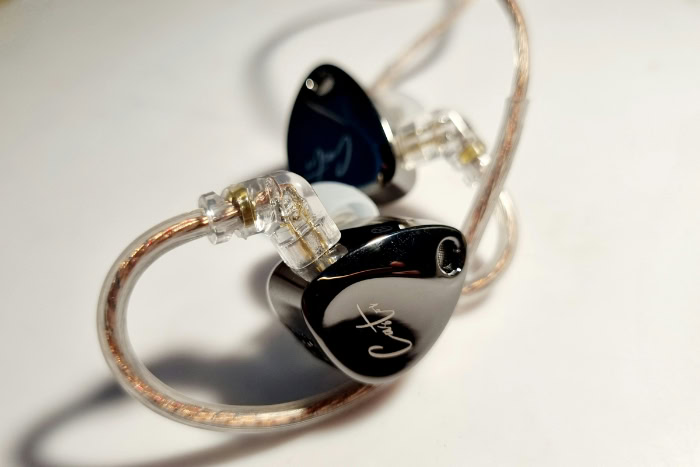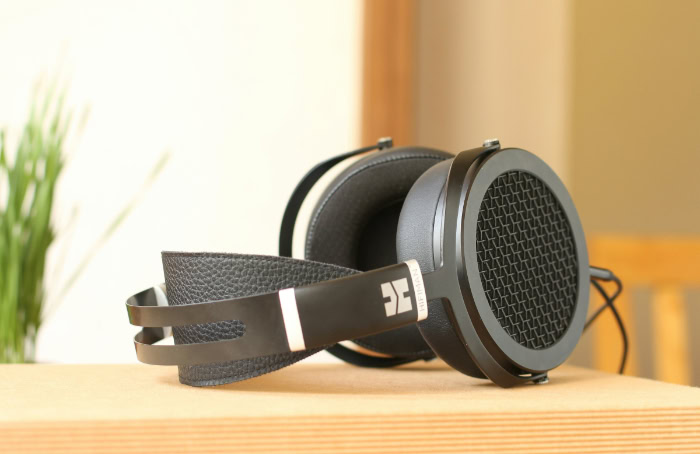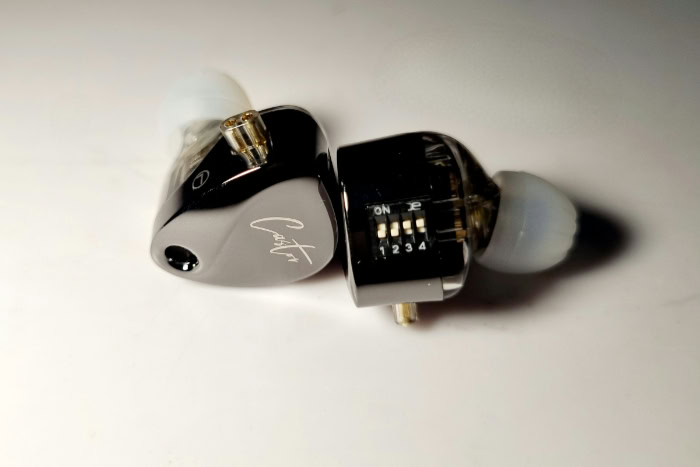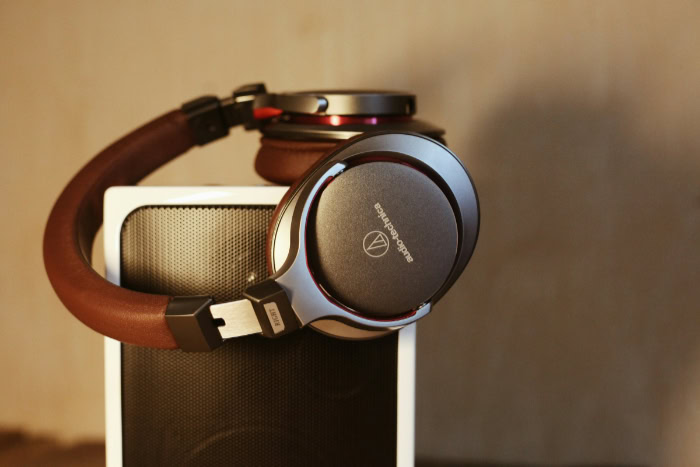IEMs vs. Headphones: Sound Quality and Comfort Explained

Finding the perfect audio gear is often a personal journey, and the decision between in-ear monitors (IEMs) and headphones is no exception. These two options aren’t just tools for music, they’re gateways to how you experience sound in your daily life.
Some prioritize the immersive, over-ear comfort of headphones, while others swear by the precision and portability of IEMs. The choice depends on your preferences, habits, and how and where you listen.
Sound Quality and Technical Performance
Sound quality is often one of the most significant factors when choosing between IEMs and headphones. Both options provide distinct listening experiences, influenced by their design, driver placement, and sound engineering.
To decide which is better suited to your preferences, it’s worth examining their unique sonic characteristics, ability to isolate or let in ambient sound, and driver technologies.
Sound Signature Differences
One of the most noticeable differences lies in the way IEMs and headphones present sound. IEMs are renowned for their precision and ability to retrieve fine details in music.
Their intimate sound delivery, thanks to their proximity to the eardrum, allows for excellent clarity and sharpness, making them a favorite for audiophiles who want to hear every subtle nuance of a track. The soundstage, while narrower, often feels focused and personal, which can be ideal for genres like acoustic, classical, or vocal-heavy music.
Headphones, in contrast, excel in delivering a wider and more enveloping soundstage, providing a sense of spatial depth that can make music feel larger and more immersive. Closed-back headphones offer a more contained sound, while open-back designs provide an airy, expansive quality that mimics live performances.
Their ability to render bass with more weight and spaciousness also appeals to listeners who appreciate genres like electronic, hip-hop, or orchestral music, where low-end presence and layering are crucial.
Noise Isolation vs. Ambient Awareness
Noise control plays a major role in how people experience sound. IEMs typically provide superior passive noise isolation because they sit deep in the ear canal and form a tight seal.
This design minimizes external distractions, making them perfect for environments like public transportation, busy offices, or situations where you want to immerse yourself in the music without interruptions. However, the trade-off is reduced ambient awareness, which may not be ideal for outdoor activities that require situational awareness, such as running or cycling.
Headphones, particularly open-back models, take a different approach by allowing ambient sound to filter through while offering a more natural representation of audio. This characteristic enhances environmental awareness, making them better suited for at-home use or relaxed, quieter surroundings.
Closed-back headphones, while offering some isolation, typically don’t rival IEMs in blocking outside noise, but they strike a balance by preventing sound leakage and maintaining a private listening experience.
Driver Technology
The type and size of drivers play a critical role in shaping the audio output of IEMs and headphones. IEMs often feature advanced driver setups, including balanced armature, dynamic, or hybrid configurations.
Balanced armature drivers excel at delivering detail and accuracy, while dynamic drivers are favored for their powerful and natural sound. Hybrid designs combine these technologies, creating a versatile listening experience that balances bass impact with high-frequency clarity in a compact design.
Headphones, due to their larger size, incorporate larger drivers. Dynamic drivers are the most common, offering impactful bass that resonates deeply and adds richness to the audio.
Planar magnetic and electrostatic drivers, found in more high-end models, push technical boundaries by offering unparalleled precision and speed. Thanks to their greater physical space, headphone drivers can move more air, resulting in audio that often feels more expansive and full-bodied compared to IEMs.
Comfort and Portability

Comfort and portability are essential considerations when choosing between IEMs and headphones, as they determine how enjoyable and practical each option is for everyday use. The way these devices fit, feel, and can be carried around plays a significant role in shaping the overall user experience.
Fit and Long-Term Wear
Fit is a primary comfort factor where IEMs and headphones differ significantly. IEMs are designed to sit directly in the ear canal, creating a snug seal with silicone or foam tips.
This design often provides an adjustable and secure fit, especially with the availability of various ear tip sizes and materials, or even custom-molded options for a superior fit. While they are lightweight and less likely to cause discomfort from weight, wearing IEMs for extended periods can lead to ear fatigue or a sense of pressure in the ears, depending on the user’s anatomy and sensitivity.
Headphones, on the other hand, rest over or around the ears and distribute weight more evenly across the head. Over-ear models, with padded ear cups, often provide all-day comfort, especially when built with memory foam or high-quality materials.
However, factors like clamp force, which helps headphones stay in place, and the level of padding on the headband can impact comfort over longer sessions. Excessive pressure or poorly designed pads might lead to discomfort. Additionally, closed-back headphones can trap heat against the ears over time, leading to sweat or warmth during extended use.
Portability and Convenience
Portability is where IEMs shine, thanks to their compact and lightweight design. Small enough to fit into a pocket or compact carrying case, IEMs are easy to store and take anywhere.
Their size and convenience make them ideal for commuting, workouts, and travel, where space and weight are often at a premium. They also tend to be less obtrusive in daily use, making them a practical choice for people on the go.
Headphones, while portable to a degree, require more space because of their larger design. Some models offer collapsible or folding mechanisms, making them easier to store in a backpack or carrying case, but they are still bulkier in comparison.
Headphones are better suited for situations where carrying them isn’t a hassle, such as traveling with a dedicated bag or using them at home or in a stationary setting. Their design prioritizes performance and comfort over extreme portability.
Durability and Maintenance
Durability and maintenance needs vary depending on the type of device. IEMs often require careful upkeep due to their placement inside the ear.
Regular cleaning is essential to prevent earwax buildup, which can block the sound or damage the drivers over time. Many IEMs come with detachable cables, which are easy to replace if they become damaged, adding to their longevity. However, their smaller size and intricate components may make them more prone to physical wear and tear if not handled properly.
Headphones, due to their larger structure, tend to be more robust in construction. However, they are not without their maintenance considerations.
Ear pads can degrade over time with regular use, especially if made from synthetic leather or foam. Replacing ear pads or headbands is often necessary for maintaining comfort and sound quality. Hinges and folding mechanisms may also wear out, particularly in portable models, so handling them with care is recommended.
Use Case Scenarios

The way audio equipment is used varies depending on individual lifestyles, environments, and needs. IEMs and headphones cater to different scenarios, with each offering distinct advantages based on factors like mobility, performance at home or in professional settings, and cost.
On-the-Go Listening
For listeners who prioritize mobility, IEMs are the go-to choice. Their lightweight and compact design makes them effortless to carry, and they take up minimal space in a pocket or bag.
The snug fit and excellent passive noise isolation make IEMs particularly useful for commuting, where external sounds like traffic or train noise can interrupt an otherwise immersive experience. Additionally, IEMs are ideal for workouts due to their secure fit and sweat-resistant materials in many models, providing reliability during physical activity.
Headphones, while portable to an extent, tend to be less practical for on-the-go listening. Their bulkier design, even with some collapsible models, makes them harder to carry discreetly.
While they can be used during casual strolls or light travel, they are better suited for situations where mobility is less of a concern. Headphones excel in stationary scenarios, such as commuting by plane or train, where their larger drivers and over-ear comfort shine.
Home and Studio Use
At home or in studio environments, headphones often take the lead. Over-ear headphones, particularly open-back models, deliver a spacious soundstage that feels natural and immersive, making them perfect for critical listening, gaming, or enjoying cinematic soundtracks.
Their comfort during extended sessions also makes them ideal for mixing and mastering in professional studio settings. The ability to wear them for hours without significant discomfort is a significant advantage in environments where sound quality takes precedence over portability.
IEMs, while compact, are also growing in popularity for home and studio use. Many professionals rely on IEMs for studio monitoring, as their precision and detailed sound reproduction are invaluable for identifying subtle elements in mixes.
At home, IEMs can provide a private and focused listening experience without disturbing others, especially in shared spaces. Their discreet design also makes them suitable for casual relaxation, like enjoying music or watching videos in bed.
Budget Considerations
Budget constraints can play a significant role in deciding between IEMs and headphones. IEMs are often more accessible in terms of cost, with many high-performing models available for under $200.
Users can find exceptional sound quality, advanced driver configurations, and durable builds in this price range, offering outstanding value for casual listeners and audiophiles alike.
Headphones, on the other hand, tend to excel in the mid-to-high price tiers. While there are budget-friendly options available, the most compelling performance is usually found in models priced at $300 or higher.
At this level, users gain access to premium features such as planar magnetic drivers, top-tier materials for comfort, and exceptional tuning for critical listening. While more of an investment, headphones in this range deliver a level of sonic refinement and durability that can justify the price tag for dedicated enthusiasts.
Choosing the Right Tool for Your Needs

Selecting between IEMs and headphones often comes down to individual preferences and how the device aligns with specific situations. Factors such as personal sound priorities, the environment where you’ll use the device, and the practicality of owning multiple options can all influence the choice.
Personal Priorities
Each listener has unique preferences when it comes to sound performance, and these ultimately shape what feels ideal. If an expansive soundstage is the priority, headphones, particularly open-back designs, excel in creating a sense of space and depth, offering an almost three-dimensional experience.
This quality is especially appealing for gaming, orchestral music, or live recordings, where spatial awareness enhances immersion.
IEMs, on the other hand, focus on precision and isolation. Their intimate delivery allows for exceptional detail retrieval and a clear distinction between frequencies.
For those who value crisp instrument separation, textured mids, and clean treble, IEMs stand out as the better choice. Additionally, listeners who prioritize bass impact and prefer a more physical experience often enjoy over-ear headphones with larger drivers, while those who seek clarity over power may lean toward IEMs.
Environmental Factors
The setting where audio equipment will be used is another crucial consideration. For environments with high noise levels, such as commutes or busy urban spaces, IEMs offer significant advantages with their superior passive isolation and discreet design.
They allow for focused listening without requiring active noise cancellation, making them ideal for people who are frequently on the move or in noisy environments.
Headphones are more suited to quieter settings, where their larger size and open-back designs can shine without external distractions. They provide a more natural sound in isolated spaces, making them perfect for at-home use or professional studio work.
Closed-back headphones can still be effective in reducing noise but may not match the isolation levels of IEMs. Social settings can also play a role, as headphones tend to be less discreet than IEMs, and their bulkier design may be less practical in casual public use.
Hybrid Solutions
For those who find it difficult to choose between IEMs and headphones, owning both can be a practical solution. Each format excels in different scenarios, making them complementary tools rather than competing options.
IEMs are perfect for outdoor use, workouts, travel, or any situation where portability and isolation are essential. Their convenience and lightweight design make them easy to carry and use casually throughout the day.
At home or in more controlled environments, headphones take the spotlight, delivering a richer, more comfortable sound experience over extended periods. Their spacious presentation and added comfort make them ideal for gaming, movie watching, and studio work.
Balancing an IEM-and-headphone combination offers versatility, ensuring that you always have the right tool for the specific setting or activity.
Conclusion
Choosing between IEMs and headphones involves balancing their unique strengths and trade-offs. IEMs offer exceptional portability, precise sound reproduction, and superior noise isolation, making them ideal for on-the-go use, workouts, and noisy environments.
In contrast, headphones deliver a more immersive soundstage, greater comfort for extended use, and a fuller bass response, excelling in home or studio settings where mobility is less of a concern.
The “best” choice ultimately depends on personal preferences and lifestyle. Those who value sleek, travel-friendly designs and intimate sound might gravitate toward IEMs, while individuals seeking a richer, open listening experience at home may favor headphones.
Both formats serve distinct purposes, and neither is universally better than the other.
If possible, trying out both options is highly recommended, as experiencing their differences firsthand can help you identify what suits your listening habits and priorities. Whether you opt for IEMs, headphones, or a combination of both, enjoying music tailored to your needs is what matters most.
Music, after all, deserves to sound just the way you love it.


